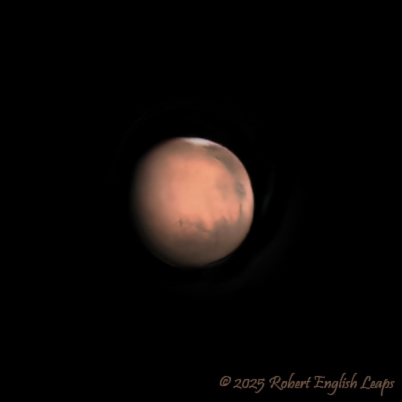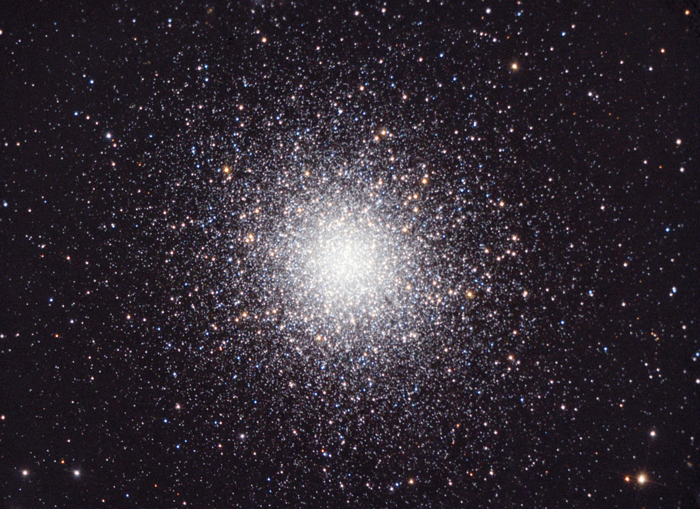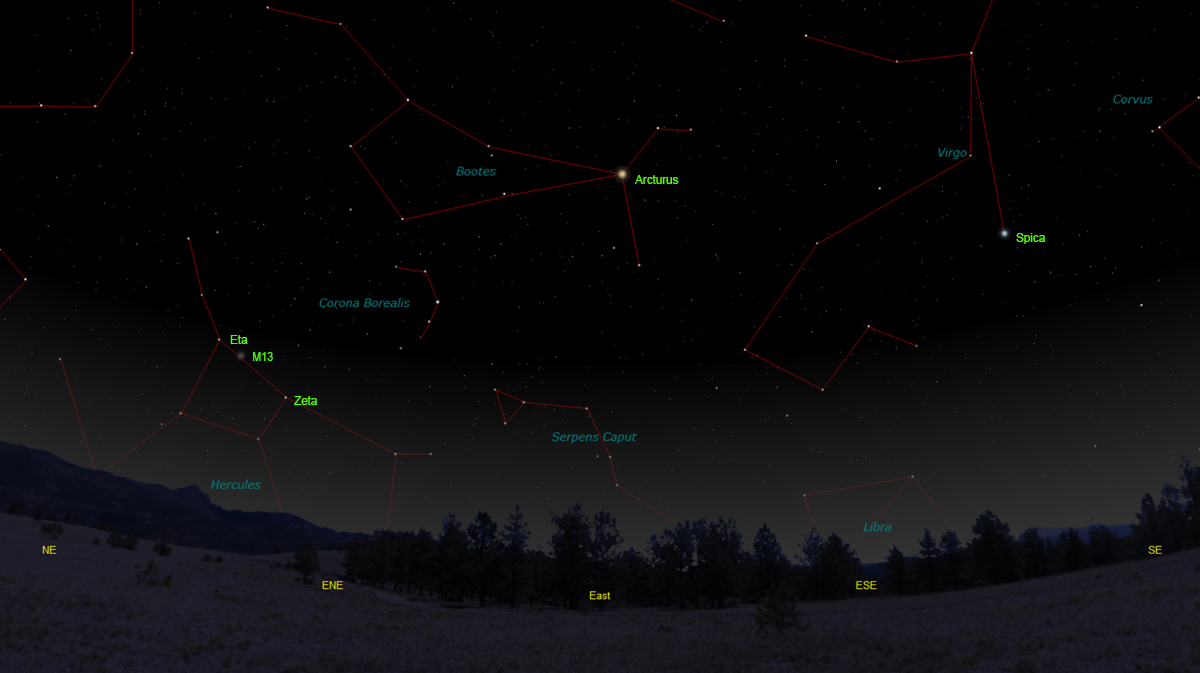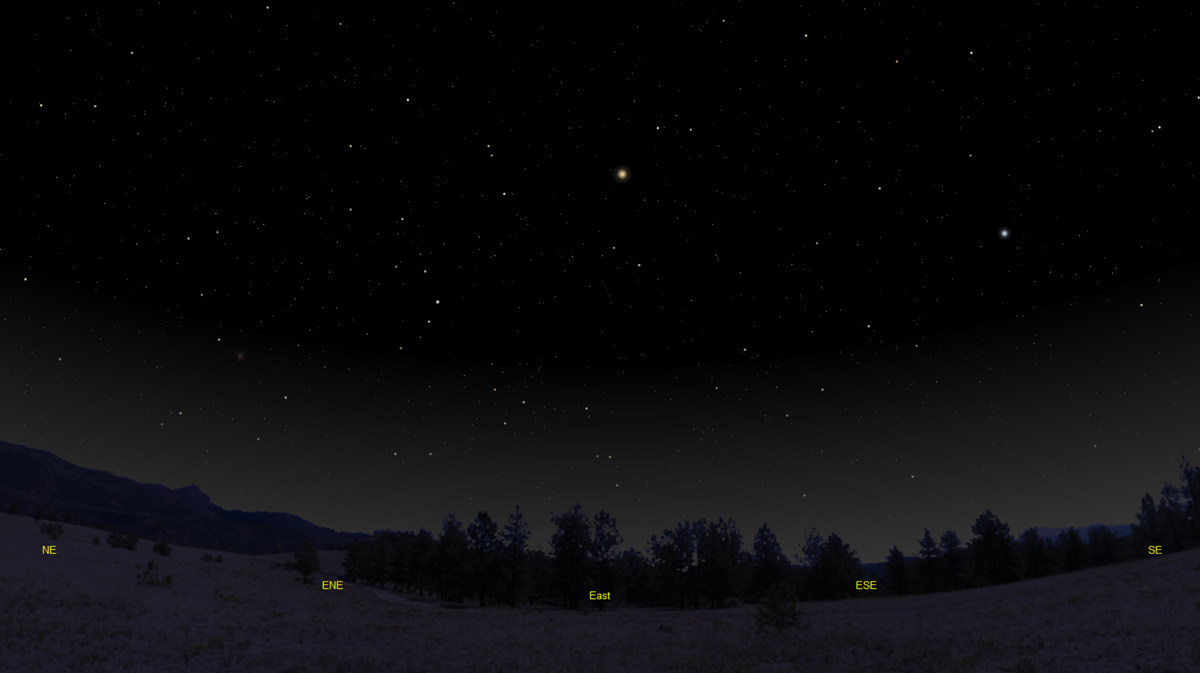The purpose of this feature is to give scout leaders, educators and naturalists an idea of some of the natural events coming up each month. We will try to cover a variety of natural events ranging from sky events to calling periods of amphibians, bird and mammal watching tips, prominent wildflowers and anything else that comes to mind. We will also note prominent constellations appearing over the eastern horizon at mid-evening each month for our area for those who would like to learn the constellations. If you have suggestions for other types of natural information you would like to see added to this calendar, let us know! Though we link book references to nationwide sources, we encourage you to support your local book store whenever possible.
Notes and Images From March 2025 Did you ever have a teacher who warned you they had eyes in the back of their head? Well, this small wolf spider actually does have two of its eight eyes facing rearward. This is a Shore Spider, Pardosa milvina. It has six other eyes as well, two large eyes facing forward above a row of four smaller eyes. Needless to say, it's hard to catch them off guard!
This spider is common in the eastern United States along the borders of streams and other moist habitats. Wolf spiders belong to the family Lycosidae (from the ancient Greek Lukos, 'wolf'). As the name implies, they are hunters who roam across their habitat in search of small prey. The total body length for this female is only a quarter of an inch. Unless you are actively looking for them you may not notice them. But if you look for movement as you walk along the borders of streams they can often be spotted. I encountered this little spider while doing some tests on a macro lens setup. One feature of members of the Pardosa genus is that the spines on the legs stand close to perpendicular from the legs.
Still, it was fun to get outside with the telescope and listen to our Chorus Frogs and Spring Peepers, not to mention our two resident Barred Owls, who were creating quite a racket on the top of the ridge behind the house. The bright star Arcturus was low in the eastern sky, a sure sign that spring was here. I took many videos of Mars that night. The best frames from a video of several thousand images were stacked to create the image shown. South is up in this image to match the appearance of Mars in an inverting telescope. The south polar cap is visible at top. The dark area extending down along the right side of Mars is Acidalia Planitia. Extending upward from bottom right is Margaritifer Terra, and to its left you can see the thin horizontal dark line of Valles Marineris, the largest canyon in the solar system. It extends 2,500 miles, the width of the United States, across the surface of Mars.
Sky Events for April 2025: The Lyrid Meteor Shower will occur during the evening hours of April 21st and the morning hours of April 22nd. Though a third-quarter moon may interfere slightly with your view, you should see some meteors! Morning Sky: Saturn and Mercury will emerge from the morning twilight in April and may be visible low in the eastern sky before sunrise. Probably the best bet is on April 25th, when you can use bright Venus to locate Saturn (fainter and below Venus) and a thin waning crescent moon (below and to the left of Venus). Mercury, if it's visible in the bright twilight, will be below and left of Venus just above the horizon. It will be the most difficult to see. Binoculars will definitely make all easier to pick out of the twilight glow. Venus is also worth trying for earlier in the month when it will be a very thin crescent in binoculars. Evening Sky:
Be sure to check the positions of the four bright moons of Jupiter that Galileo discovered early in the 17th century. They are Ganymede, Io, Europa and Callisto. They are visible in binoculars and they change position during the course of a single evening. In the 1670's Danish astronomer Ole Romer made a series of measurements of the eclipses of Jupiter's smallest moon Io. Romer noticed that the intervals between eclipses of Io varied, and these discrepancies were related to the relative positions of the Earth and Jupiter in their orbits. He correctly concluded that these discrepancies could be explained by light having a finite speed. His calculations gave a value of 226,663 kilometers per second for the speed of light. The true value is 299,792 km/sec. That's pretty amazing! The great science fiction author Isaac Asimov once said, "The most exciting phrase to hear in science, the one that heralds new discoveries, is not "Eureka" but "That's funny..." Mars is about 64 degrees above the southwest horizon at dusk in Gemini at the beginning of the month. Over the next month it will move into the constellation of Cancer. As mentioned above, it is rapidly getting smaller as Earth swings by it and leaves it behind. By the end of the month it will be only about 6.6 seconds of an arc in apparent diameter. Constellations:
You can locate Arcturus and Spica by using the three stars in the tail of Ursa Major (or the handle of the "Big Dipper"). The three stars in the tail form an arc that if extended curves on to Arcturus and Spica. The mnemonic is that you "arc to Arcturus and on to Spica". As spring progresses and Hercules rises higher in the sky, look for the globular cluster Messier 13, which appears like a small fuzzy patch of light about 1/3 of the distance from Eta to Zeta Hercules (see the chart below). A cluster of stars about 21,000 light years away, M13 can be made out with the naked eye in a dark country sky when the constellation is high in the sky. Binoculars will help pick it out. In small telescopes you can make out some stars around the edges of the cluster. It's a beautiful sight in a large telescope, and you can see a small shadowy three-sided feature (about the 4:00 o'clock position in the image above) nicknamed "the propeller."
On Learning the
Constellations: We advise learning a few constellations each month, and then following them through the seasons. Once you associate a particular constellation coming over the eastern horizon at a certain time of year, you may start thinking about it like an old friend, looking forward to its arrival each season. The stars in the evening scene above, for instance, will always be in the same place relative to the horizon at the same time and date each April. Of course, the planets do move slowly through the constellations, but with practice you will learn to identify them from their appearance. In particular, learn the brightest stars (Like Arcturus and Spica in the above scene looking east), for they will guide you to the fainter stars. Once you can locate the more prominent constellations, you can "branch out" to other constellations around them. It may take you a little while to get a sense of scale, to translate what you see on the computer screen or what you see on the page of a book to what you see in the sky. Look for patterns, like the stars that make up the constellation Corona Borealis. The earth's rotation causes the constellations to appear to move across the sky just as the sun and the moon appear to do. If you go outside earlier than the time shown on the charts, the constellations will be lower to the eastern horizon. If you observe later, they will have climbed higher. As each season progresses, the earth's motion around the sun causes the constellations to appear a little farther towards the west each night for any given time of night. If you want to see where the constellations in the above figures will be on May 15th at 9:15pm, you can stay up till 11:15pm on the April 15th and get a preview. The westward motion of the constellations is equivalent to two hours per month. Recommended: Sky & Telescope's Pocket Star Atlas is beautiful, compact star atlas. A good book to learn the constellations is Patterns in the Sky, by Hewitt-White. For sky watching tips, an inexpensive good guide is Secrets of Stargazing, by Becky Ramotowski.
A good general reference book on astronomy is the Peterson
Field Guide,
A Field Guide to the Stars and Planets, by Pasachoff. The book retails for around $14.00.
The Virtual Moon Atlas is a terrific way to learn the surface features of the Moon. And it's free software. You can download the Virtual Moon Atlas here. Apps: The Sky Safari 6 basic version is free and a great aid for the beginning stargazer. I really love the Sky Safari 6 Pro. Both are available for iOS and Android operating systems. There are three versions. The Pro is simply the best astronomy app I've ever seen. The description of the Pro version reads, "includes over 100 million stars, 3 million galaxies down to 18th magnitude, and 750,000 solar system objects; including every comet and asteroid ever discovered." You may also want to try the very beautiful app Sky Guide. Though not as data intensive as Sky Safari, Sky Guide goes all out to show the sheer beauty of the night sky. Great for locating the planets. A nother great app is the Photographer's Ephemeris. Great for finding sunrise, moonrise, sunset and moonset times and the precise place on the horizon that the event will occur. Invaluable not only for planning photographs, but also nice to plan an outing to watch the full moon rise. Available for both androids and iOS operating systems.
Amphibians:
Recommended: The Frogs and Toads of North America, Lang Elliott, Houghton Mifflin Co.
Archives (Remember to use the back button on your browser, NOT the back button on the web page!) Natural Calendar February 2025 Natural Calendar December 2024 Natural Calendar November 2024 Natural Calendar September 2024 Natural Calendar February 2024 Natural Calendar September 2023 Natural Calendar February 2023 Natural Calendar September 2022 Natural Calendar February 2022 Natural Calendar December 2021 Natural Calendar November 2021 Natural Calendar September 2021 Natural Calendar February 2021 Natural Calendar December 2020 Natural Calendar November 2020 Natural Calendar September 2020 Natural Calendar February 2020 Natural Calendar December 2019 Natural Calendar November 2019 Natural Calendar September 2019 Natural Calendar February 2019 Natural Calendar December 2018 Natural Calendar September 2018 Natural Calendar February 2018 Natural Calendar December 2017 Natural Calendar November 2017 Natural Calendar October 2017Natural Calendar September 2017 Natural Calendar February 2017 Natural Calendar December 2016 Natural Calendar November 2016 Natural Calendar September 2016Natural Calendar February 2016 Natural Calendar December 2015 Natural Calendar November 2015 Natural Calendar September 2015 Natural Calendar November 2014 Natural Calendar September 2014 Natural Calendar September 2013 Natural Calendar December 2012 Natural Calendar November 2012 Natural Calendar September 2012 Natural Calendar February 2012 Natural Calendar December 2011 Natural Calendar November 2011 Natural Calendar September 2011 Natural Calendar December 2010 Natural Calendar November 2010 Natural Calendar September 2010 Natural Calendar February 2010 Natural Calendar December 2009 Natural Calendar November 2009 Natural Calendar September 2009 Natural Calendar February 2009 Natural Calendar December 2008 Natural Calendar November 2008 Natural Calendar September 2008 Natural Calendar February 2008 Natural Calendar December 2007 Natural Calendar November 2007 Natural Calendar September 2007 Natural Calendar February 2007 Natural Calendar December 2006 Natural Calendar November 2006 Natural Calendar September 2006 Natural Calendar February 2006
Natural Calendar December 2005
Natural Calendar November 2005
Natural Calendar September 2005
Natural Calendar February 2005
Natural Calendar December 2004
Natural Calendar November 2004
Natural Calendar September 2004
Natural Calendar February 2004
Natural Calendar December 2003
Natural Calendar November 2003 Natural Calendar February 2003 Natural Calendar December 2002 Natural Calendar November 2002 Nature Notes Archives: Nature Notes was a page we published in 2001 and 2002 containing our observations about everything from the northern lights display of November 2001 to frog and salamander egg masses. Night scenes prepared with The Sky Professional from Software Bisque All images and recordings © 2025 Leaps
|
|






